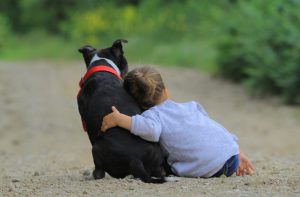
“Dogs have given us their absolute all. We are the center of their universe. We are the focus of their love and faith and trust. They serve us in return for scraps. It is without a doubt the best deal man has ever made.” Roger Caras
A Message From Ginger Morgan, Our Executive Director

As we celebrate the holidays and prepare to bid 2018 farewell. I want to encourage you to consider a year-end contribution to The Puppy Up Foundation.
Your generous support couldn’t be more important — we are preparing to fund additional critical cancer research that will not only help your pets, but also your family and friends.
Each year we strive not only to fund research, but also to continue our grassroots efforts to bring awareness to canine cancer, new treatments, and clinical trials. An informed pet parent can make better decisions.
This is why I hope you will send your year-end support for Puppy Up and become a Cancer Fighting Super Hero.
Ginger Morgan
Executive Director
P.S. Did you know that 1 out of 3 dogs will be diagnosed with cancer? And that 50% of the dogs over the age of 10 will get cancer? It still shocks me. The majority of my dogs are over 10. I appreciate every moment that I can cuddle with them. How old is your dog?
P.P.S. The quickest way to make your 2018 Tax deductible is to visit www.puppyup.org.
10 Warning Signs of Companion Animal Cancer
It is never too late to learn the warning signs of pet cancer. Cancer is not strictly a human condition. As the No. 1 disease-related killer of dogs and cats, cancer claims millions of pets each year.
The importance of annual check-ups regardless of the age of your pet is critical in the prevention of cancer. Here are the top 10 early warning signs of pet cancer listed out by the American Veterinary Medical Association.
1. Abnormal swellings that persist or continue to grow
2. Sores that do not heal
3. Weight loss
4. Loss of appetite
5. Bleeding or discharge from any body opening
6. Offensive odor
7. Difficulty eating or swallowing
8. Hesitation to exercise or loss of stamina
9. Persistent lameness or stiffness
10. Difficulty breathing, urinating or defecating
Steps to Avoid Cancer in Your Pet
Keeping your pet active with a healthy weight and on a high quality diet may prevent some forms of cancer. Obesity is a major cause of cancer in pets. Having your pet spayed or neutered may also decrease the chance of various reproductive cancers.
Can Puppies and Kittens Get Cancer?

By Dr. Ann Hohenhaus DVM, DACVIM (SAIM, Oncology)
From Vet Street
The waiting room of a veterinary cancer specialist is pretty much a geriatric zone. The commonly treated cancers in adult dogs and cats include lymphoma, osteosarcoma and mast cell tumors. Research shows the average age of cats with lymphoma is 9 to 12 years and the average age of dogs with the same disease is 6 to 9 years. The numbers for osteosarcoma and mast cell tumors for older pets stack up similarly.
Just as I see in our companion animals, most human oncologists also consider human cancer to be largely a disease of middle-aged to older adults. However, according to the American Cancer Society, children can and do get cancer. The most common forms of the disease in children are leukemia, brain tumors, lymphoma and osteosarcoma. There are also a group of malignant (cancerous) tumors in children that arise from immature cells. Rare in adult humans, these tumors have the ominous suffix “blastoma” at the end of their name: neuroblastoma (involving the nervous system), nephroblastoma (involving the kidney) and retinoblastoma (involving the eyes). One has to wonder, if children can get cancer, then what about puppies and kittens? Are there signs we should be on the lookout for in our pets — even the youngest ones?
What We Know About Puppy and Kitten Cancers
Not much is written about tumors in pediatric dogs and cats (those less than 1 year of age). My big, fat veterinary oncology textbook does not have a chapter on the subject, nor is it listed in the index. Using a search engine for medical information, I found very little on the topic of pediatric dog and cat tumors. As a veterinary cancer specialist, I see only a select few pediatric tumors since a primary-care veterinarian handles the most common benign tumors (benign meaning those that cannot spread) and the rare ones are, well, rare. But in an effort to put our headline question into some context for pet owners, I will summarize the information I found, as well as my experience as a veterinary oncologist, below.
3-2-1 – Good Numbers to Keep in Mind
Here’s one thing you definitely should know as the owner of a young pet. Puppies and kittens receive a series of vaccinations intended to protect them from serious infectious diseases like distemper, rabies and parvovirus. Vaccinations can cause the formation of a lump at the site of injection. These lumps can form because vaccination turns the immune system on and a huge assembly of immune cells collects at the vaccination site. Normally, the cells dissipate over a week or so. But veterinarians and pet families should follow the 3-2-1 rule when it comes to addressing post-vaccination lumps: If the lump has been present for more than three months, is greater than 2 cm (1 inch) in diameter or is still growing one month after vaccination, the lump should be removed and biopsied. Occasionally, these lumps can become malignant and early removal is key to successful treatment. I see a handful of injection-site tumors each year.
For the rest of the article, please follow this link.
Just Like Humans, As Dogs Get Older, They’re More Likely To Develop Cancer

By Jerrel Floyd
From Post and Courier
Just like humans, as pets live longer, the threat of cancer is increasingly something that dogs and cats face. And surgery and chemotherapy for animals are often recommended avenues of treatment.
According to the Animal Cancer Foundation, of the 65 million dogs in the United States, 6 million of those dogs will likely be diagnosed with cancer. With dogs developing cancer at a similar rate of humans, the American Veterinary Medical Association reports that almost half of the dogs over the age of 10 will possibly develop cancer.
Chemotherapy is a medical treatment that involves the killing of cancer cells. Though people might attempt to liken the chemotherapy experience of humans with that of a dog like Mia, local veterinary oncologists emphasize that there are key differences.
“It’s kind of a different ball game,” said Dr. Michelle Wall, an oncologist with Veterinary Specialty Care.
At the medical facility, Wall said each oncology vet sees up to 15 pets per day.
Their owners are often mistaken, she said, in thinking that chemotherapy for pets will be as harsh as it often is for humans.
“You can see it on the owner’s face, this wall goes up,” she said.
One of things that she tries to emphasize with owners is that when it comes to chemotherapy for dogs, quality of life is always considered before quantity of life. Their goal is to always cure the cancer, but they want to do it in a way that doesn’t prevent the dog from living a happy and productive life.
Since dogs can’t verbally consent to chemo like a human, Wall said that it’s imperative their chemo patients experience as few symptoms as possible. Because of this, though humans and dogs take the same chemotherapy medications, the chemo dosage for a dog is significantly lower than that of a human.
For the rest of the article, please follow this link.
Pup of the Month — Alex Mehta

Alex Mehta
(By San Mehta) Alex came into my life around 6 years back. One day as I opened the gate I found him on the street outside. He must have been between 2 to 3 years old, was a mixed breed with a pleasing personality. Due to the intense heat he quietly entered my Driveway and sat next to the car. This became a regular feature as he would move out at night and come inside during the day. From the Driveway to inside of the house was a short distance for him and he soon became the darling of the house and was loved by all. We would go for long walks morning and evening. He was a very gentle dog and we nicknamed him a “saint” as he never barked or attacked anybody and became friends with one and all. In January of 2010, he started having pain and limp in his rear hind leg. Three months of misdiagnosis later, came the shocker of Osteosarcoma. I wasn’t prepared to accept no cure, no remission diagnosis. I researched the net and we started treatment with Artemisinin. One month of fighting the beast and Alex lost the battle on June 11 2010. My dear Alex you will continue to live in our hearts forever.
(Alex was an international contestant in the 2011 calendar contest, who lived with his family in India.)
2019 Calendars Are Still Available

|
Our 2019 “Cancer Can’t Keep a Good Dog Down” Calendars are still available, but supplies are limited. Our calendar is filled with stories and photos of canine cancer heroes, special dog holidays, and national observances. Everything that makes our calendars unique and great as gifts and keepsakes. The price is $18 each. Please click here to order. Thanks again to all who entered or donated to this contest. |
|
Our Mission
The Puppy Up Foundation’s mission is to bring awareness to canine cancer, its similarities to human cancer, and to fund education, awareness, and research that benefit both pets and people. For more on the grants your generous donations continue to fund, please follow this link.
Disclaimer
The Puppy Up Foundation does not endorse nor recommend any particular product, service, or treatment. We offer information strictly for educational and/or informational purposes. We believe it is the pet owner’s responsibility to do the research and draw his or her own conclusions.
We can always use your help. If you’re interested, send me an mail at ginger@puppyup.org. Sincerely, |








